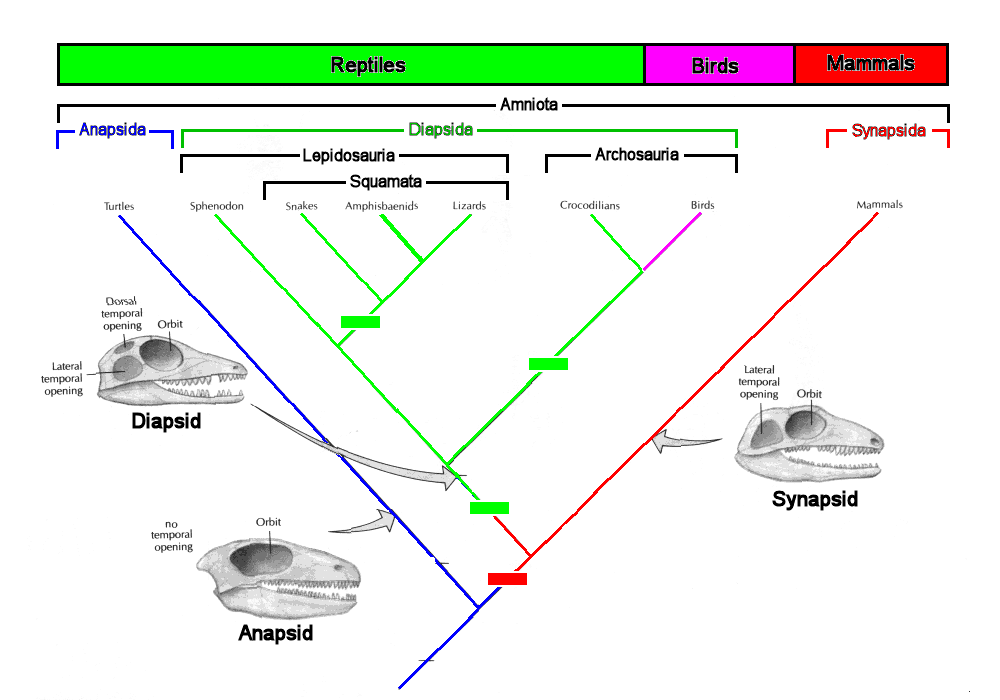
Phylogeny of living Amniota

Major lineages of
the Amniota are distinguished by the
number
and placement of temporal openings in the skull. The
ancestral condition is
probably
the absence of such openings in the anapsid ("without
arches")
skull,
as seen in modern turtles (Anapsida).
One
derived condition is a synapsid skull with a single, low
opening,
as seen in Mammals, the only living members of the
lineage Synapsida.
A further modification found in the ancestor of all other living
amniotes
is the diapsid ("two-arch") skull, with both high
and low openings.
In
all living Diapsida except
the Tuatara (Sphenodon), the diapsid structure has been
further modified such that the two
openings
are not distinct. In Crocodilia, this is connected with
strengthening of the skull for greater bite pressure, and in
Aves for lightning of the skull as a single fused structure.
The change in
number of temporal openings from 0  1
1  2
is called a transformation series.
The reconstruction shown above is the classical explanation:
temporal
openings
in synapsid and diapsid skulls may not be homologous, and the
absence
of
arches in the anapsid skull seems to be derived from the diapsid
condition.
2
is called a transformation series.
The reconstruction shown above is the classical explanation:
temporal
openings
in synapsid and diapsid skulls may not be homologous, and the
absence
of
arches in the anapsid skull seems to be derived from the diapsid
condition.